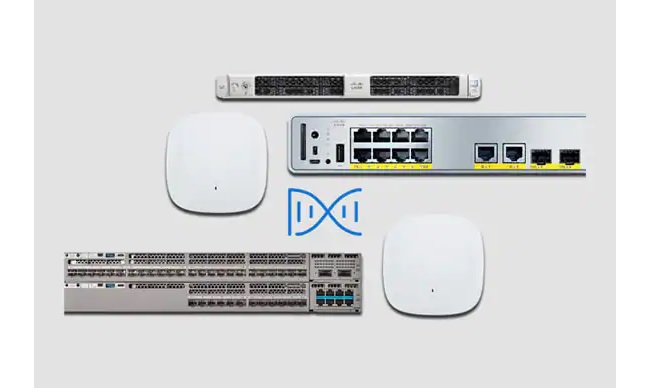The Cisco Catalyst 9200 is the first of its type, and it is used to replace the Cisco Catalyst 2960X in the fixed corporate switching access platform. It is designed for security, resiliency, and programmability. Today, we’ll discuss the differences between the Cisco Catalyst 9200 and the Cisco Catalyst 2960X.
Cisco Catalyst 9200 Series Switches
Cisco Catalyst 9200 Series Switches are Cisco’s newest contribution to the fixed enterprise switching access platform, with security, resiliency, and programmability in mind. Cisco Software-Defined Access (SD-Access), Cisco’s leading enterprise architecture, relies on these switches as entry-level switches. With FRU power supplies and fans, modular uplinks, cold patching, eternal Power over Ethernet (PoE), and the industry’s highest Mean Time Between Failures, the 9200 Series provides enterprise-level reliability and keeps your business up and operating flawlessly (MTBF).
The Cisco Catalyst 9200 Series also features a highly resilient and efficient power design with redundant power supply support, allowing for a high density of PoE+ ports. The switches provide industry-leading PoE resiliency features, such as eternal and fast PoE, making them ideal for IoT installations. With platinum- and silver-rated power supplies available, they support the industry’s most efficient power supply.
Hot Cisco Switches Accessories: C9200-STACK-KIT=, C9200-NM-4G, C9200L-STACK-KIT=
Cisco Catalyst 2960X Series Switches
Onboarding, configuration, monitoring, and troubleshooting are all made simple with the Cisco Catalyst 2960-X Series. Advanced Layer 2 and Layer 3 functionality, as well as optional Power over Ethernet Plus (PoE+) power, are available with these fully managed switches. They allow scalable, secure, and energy-efficient business operations with intelligent services, and are designed for operational simplicity to minimize the total cost of ownership. Application visibility, network dependability, and network resiliency are all improved by the switches.
Hot Cisco Switches Models: WS-C2960X-24PS-L, WS-C2960X-48TS-L
Cisco Switches Compare: Catalyst 9200 vs 2960X Series
The Cisco Catalyst 9000 Switch Series is the latest generation of Cisco’s iconic Catalyst LAN access, aggregation, and core switches. The Cisco Catalyst 9200 Series switches boost the networking performance by incorporating new hardware and software improvements that provide a larger variety of capabilities and applications. The 9200 series switches are reliable, safe, and simple to maintain. Unlike the 2960 series switches, the new generation 9200 includes a slew of hardware upgrades, some of which are included in the table below.
| Catalyst 9200 Series | Catalyst 2960X Series | |
| Programmable ASIC | Yes | No |
| CPU | Embedded quad core CPU 1.4 Ghz | Dual core CPU 600 MHz |
| DRAM (DDR3) | 4 GB/2 GB | 512 MB |
| Flash on board | 4 GB | Up to 256 MB |
| mGig Ports | Yes | No |
| 25G uplinks | Yes | No |
| Stacking (module) | StackWise-160/80 | FlexStack-Plus/Extended module |
| Number of stack members | 8 | 8 |
| Stack bandwidth | 160 Gbps/80 Gbps | 80 Gbps |
| Power supply | 2 FRUable PS | FRUable on 2960-XR |
| Platinum Rated Power supply | Yes | No |
| Max PoE budget | 1440W | 740W |
| Modular uplinks | Yes | No |
| Modular fans | Yes | No |
| Max depth | 13.8 in | 16 in. |
| Blue Beacon | Yes | No |
| RFID | Yes | No |
Management interface- The Cisco Catalyst 9200 Series’ management interface is Gigabit Ethernet, which is far more capable than the Catalyst 2960-X Series’ Fast Ethernet. Unlike the Catalyst 2960-X series platforms, which lack support for virtual VRF instances, the management port on the Catalyst 9200 platform provides dedicated Virtual Routing and Forwarding (VRF) for separation of management traffic from normal data traffic.
Stacking- When compared to FlexStack Plus or Extended on the Catalyst 2960-X Series, the StackWise160/80 architecture on the Catalyst 9200 Series provides a more robust and highly available infrastructure. Eight switches can be stacked together in StackWise160/80 to make a single logical switch with support for SSO methods. During failovers, this provides 1:1 redundancy. This 1:1 redundancy allows for a standby switch to take up the duty of the active switch, which is an advantage over the FlexStack architecture, which requires stack members to re-elect if the master switch fails.
Conclusion
QoS (Quality of Service), more flexible NetFlow, Stacking, and 25-GE interfaces are just a few of the features that the Cisco 9200 series switches offer. The Cisco 9200 Series Switches are a new generation of switches with significantly more capabilities than the Cisco 2960 Series Switches. They are completely prepared for the migration from the Cisco 2960 Series Switches. In summary, you should select the switch based on your specific requirements.
If you want to order Switches, welcome to visit: Shop Switches at Router-switch.com.
Related Topics:
Cisco Nexus Vs Catalyst Switches: what’s the difference?
Cisco Switches Comparison: Catalyst 9400 vs. Catalyst 9500
Cisco SG350 vs. CBS350-What’s the difference?
Brand Switches Comparison: Cisco Switches vs Huawei Switches



